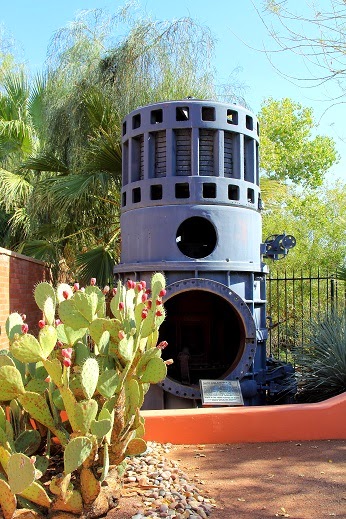The first floor of ISTB 4 is dedicated to “visualizing science,” which focuses on exhibits to “explore earth and space sciences through digital media, public lectures, visible laboratories, and interactive displays.” Throughout the Gallery of Scientific Exploration, to help explain scientific knowledge, there are various kiosk-style interactive exhibits with large-format, high-definition monitors that display video information from earth-observing satellites and robotic probes of other worlds. “Magic Planet” is a popular exhibit that uses a six-foot diameter sphere with internal digital video projectors to present global information from NASA, NOAA, and other sources about the Earth, Moon, Sun and Planets.
Also located on the first floor is the Marston Exploration Theater that presents documentary movies with earth and space science themes. The auditorium is also used for public lectures on various scientific subjects. A list of public events can be found on their website: SESE.ASU.EDU/Marston.
The second floor of ISTB 4 contains the Center for Meteorite Studies and glass-walled lab modules where you can observe students and faculty at work on various scientific projects. Unfortunately, due to budget constraints and staff limitations, the public Meteorite Identification Program has been suspended and the University will no longer accept meteorite specimens sent for identification. However, meteorite samples from the ASU World-renowned collection are on display where visitors can touch real meteorites and find out where meteorites come from.
Now if I could only remember everything that I learned on my visit to ISTB 4!



























































































